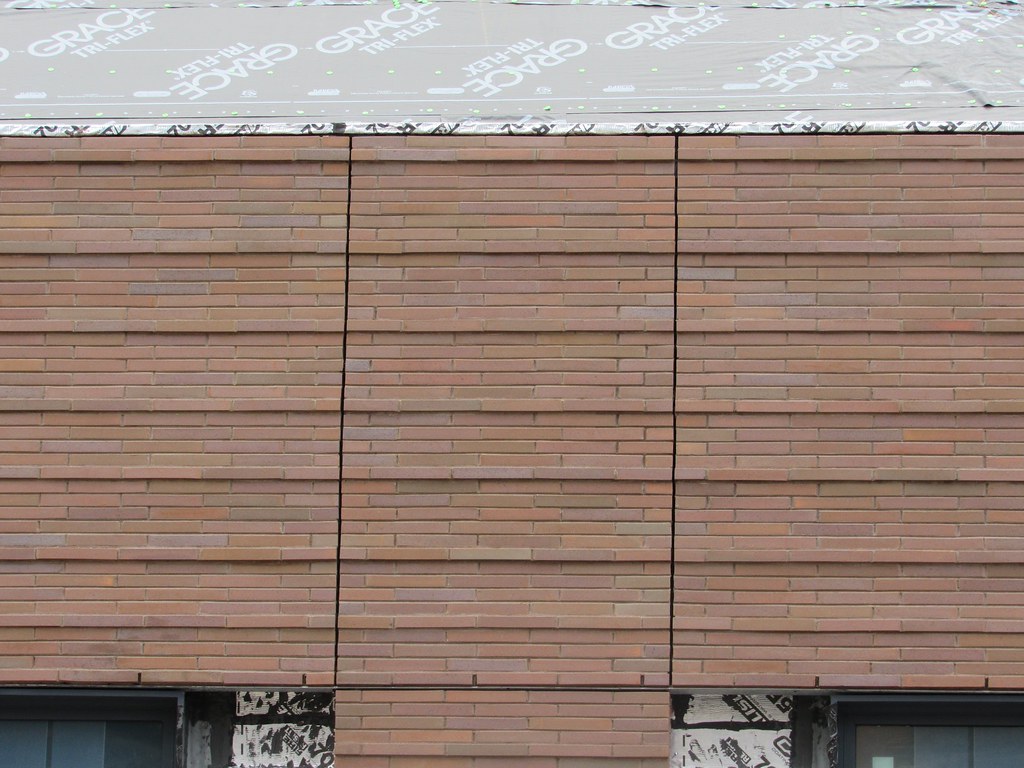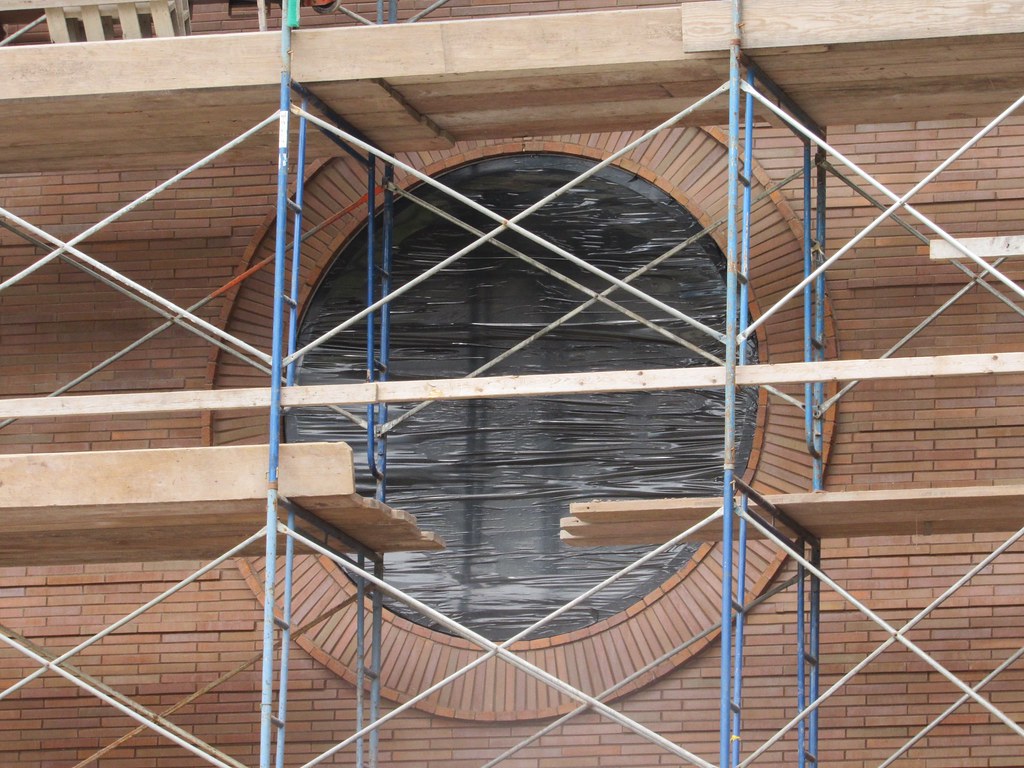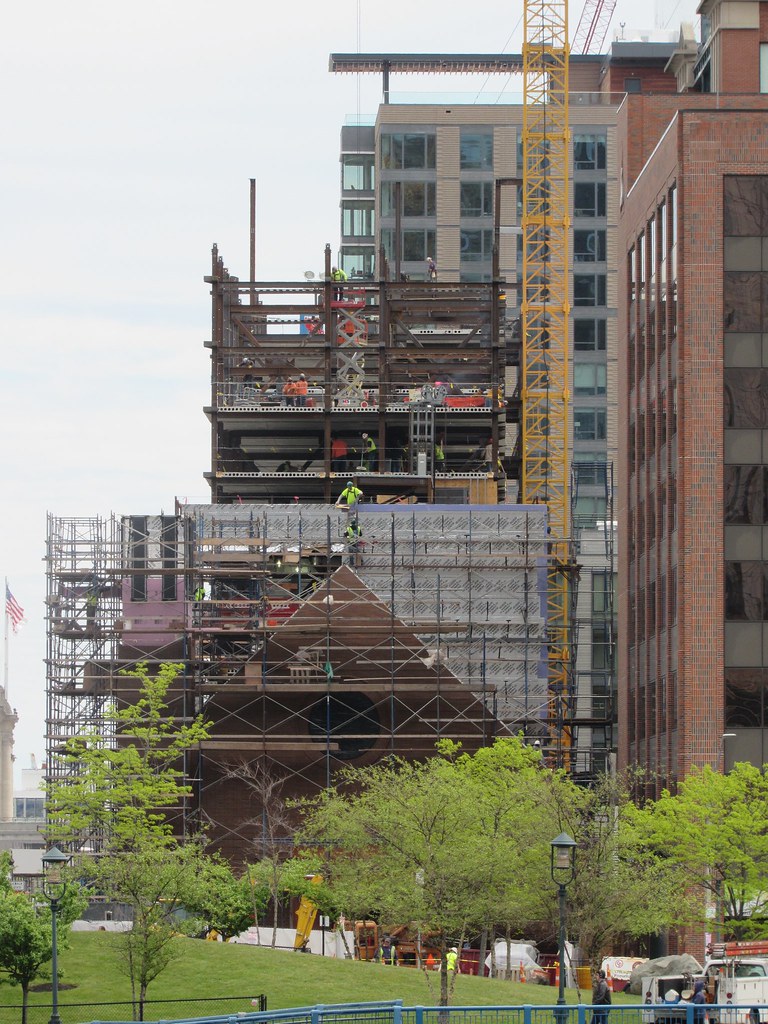cca
Senior Member
- Joined
- Aug 19, 2008
- Messages
- 1,408
- Reaction score
- 12
I know, I was pretty much convinced that actual masonry was illegal now.
Nope. Just does not make a huge amount of sense.
cca
I know, I was pretty much convinced that actual masonry was illegal now.
is perhaps a bit of an overstatement. It could be much better if not watered down by near religious commitment to R.O.I. and a lack of urban planning vision that goes beyond getting it done as quickly as possible.The seaport is coming together masterfullly. .
For me, the problem with the Seaport is that nobody took responsibility for transportation/mobility, which is a key civic/place function.
The OLGV church, as a good example of "interesting street-facing retail" (with no parking, interesting textures, and a pedestrian plaza, backed up with boutique buildings similar to the way Rockefellar Center's national pavillions, Britain, France, Italy, International face St. Patrick's across 5th Ave) *is* and example of stuff that went right, but it is hard to credit the planners
Its the traffic, transport, and civic services (library? school? police kiosk?) that the private sector was not asked to provide or chip in for that's missing. Had not the church occupied a key parcel, they wouldn't be there either
So while, taken singly, most new "ROI" buildings were done right, they were never asked to have a "civic moment" to them. That's sad. OLGV kinda calls attention to how such stuff is appreciated but how it never got cooked in.
.
For me, the problem with the Seaport is that nobody took responsibility for transportation/mobility, which is a key civic/place function.
The OLGV church, as a good example of "interesting street-facing retail" (with no parking, interesting textures, and a pedestrian plaza, backed up with boutique buildings similar to the way Rockefellar Center's national pavillions, Britain, France, Italy, International face St. Patrick's across 5th Ave) *is* and example of stuff that went right, but it is hard to credit the planners
Its the traffic, transport, and civic services (library? school? police kiosk?) that the private sector was not asked to provide or chip in for that's missing. Had not the church occupied a key parcel, they wouldn't be there either
So while, taken singly, most new "ROI" buildings were done right, they were never asked to have a "civic moment" to them. That's sad. OLGV kinda calls attention to how such stuff is appreciated but how it never got cooked in.
.
The other thing I noticed was that OLGV's brick is a thin "roman brick" style and very carefully/tastefully articulated.
 https://flic.kr/p/Hdk4Ye
https://flic.kr/p/Hdk4Ye https://flic.kr/p/Hjnxwe
https://flic.kr/p/Hjnxwe https://flic.kr/p/Gp21JZ
https://flic.kr/p/Gp21JZ https://flic.kr/p/HdszaX
https://flic.kr/p/HdszaX https://flic.kr/p/Hdsuha
https://flic.kr/p/HdsuhaThis neighborhood needs more cultural developments like this. Not necessarily another church, but something other than a glass apartment or office building.
... because the Children's Museum, Boston Fire Museum, ICA, District Hall, new Society For Arts & Crafts outpost, BSA space, and Tea Party Museum--all within a 2-block radius no less--are hardly enough cultural offerings...
Thanks for the photos, BeeLine. The church is a nice addition. I wonder if a synagogue could be thrown in the mix, too.
Synagogues don't get built by a central authority... there's a long way to go before a Jewish community in the Seaport wants a building. Frankly, it would be better to support the existing Downtown synagogues than to found a new one, since they're both hard up for young members.
I definitely agree, I kind of just keep it in my head that the rest of Boston wasn't planned ahead of time for the most part and over time these things fill in organically. Gonna take a looooong time but eventually I feel like all of this will be addressed, the main point being transportation- hopefully sooner than later.
I kind of feel like once people start moving in (very rich people) they'll call for a grocery store, then a school, then with that they'll need a library, and then all of these people will clog the streets and need better transportation. They're rich and some important people will live here so Im hopeful their calls wont fall on deaf ears. Gonna be a while but I feel like all this will come to fruition once it starts becoming a "real neighborhood" where many people live, work, and play.
Only thought for an improvement: some sort of steeple - traditional or a modern interpretation to more gracefully draw the eye upwards to the surrounding street wall taking shape.
